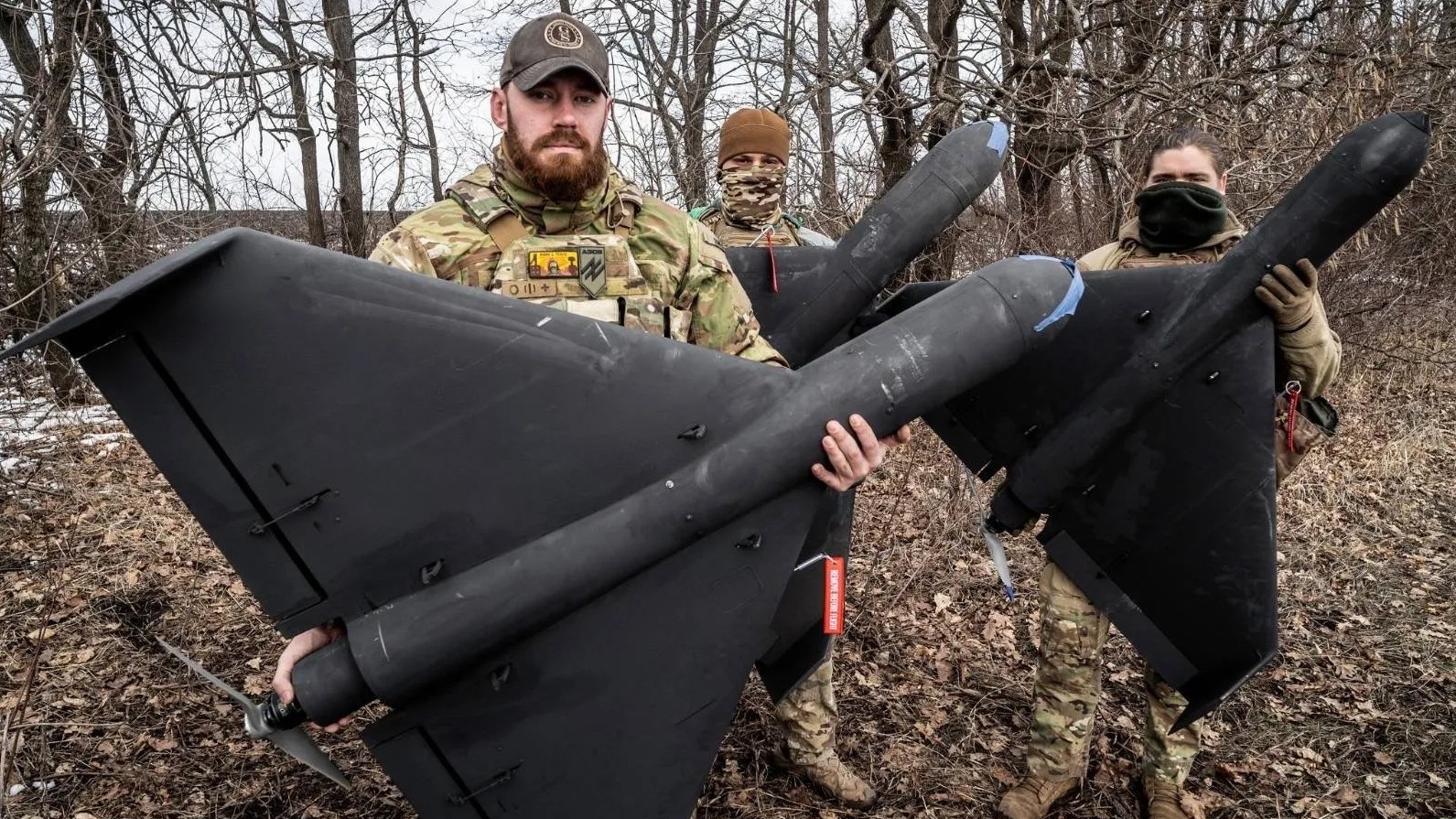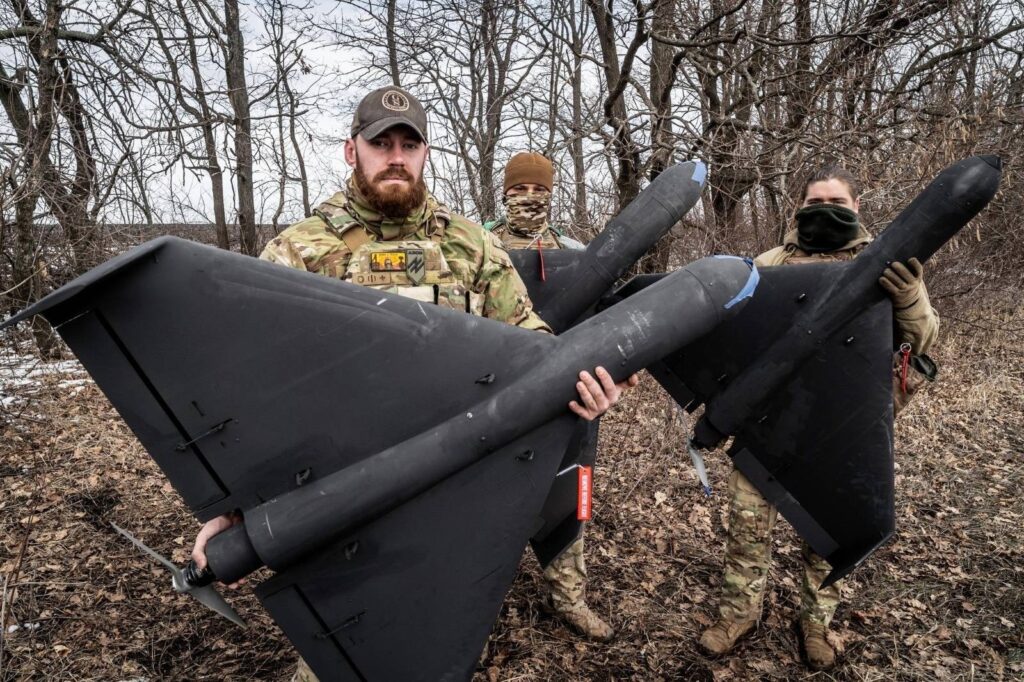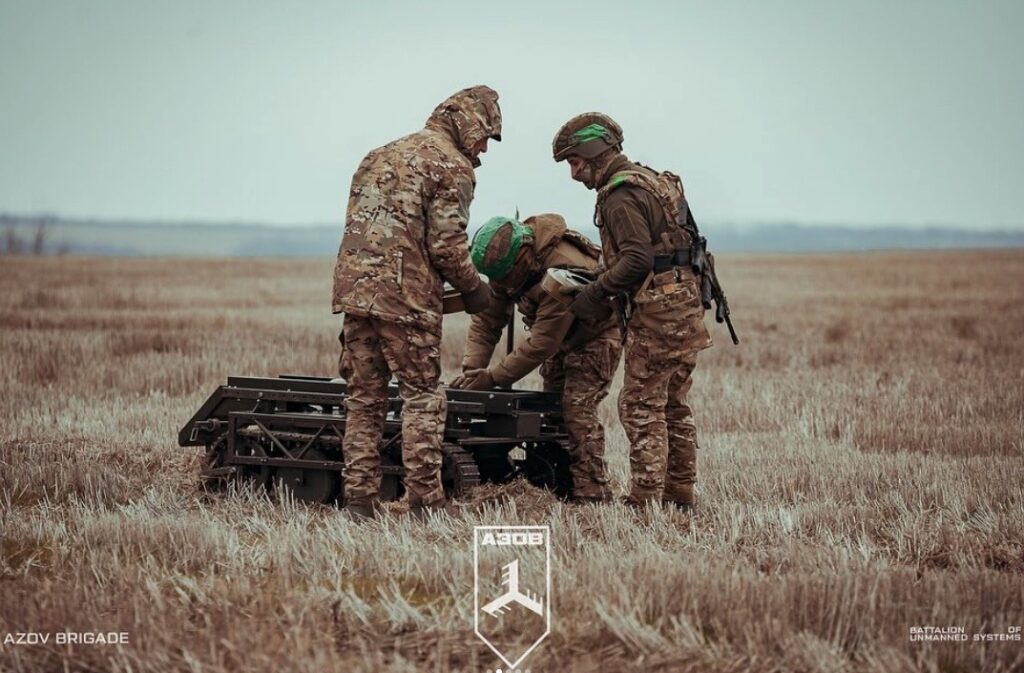El comandante del Batallón de Sistemas No Tripulados de Azov comparte los últimos detalles sobre cómo están evolucionando las tácticas en la sangrienta región del Donbass. La Brigada Azov del Primer Cuerpo de la Guardia Nacional de Ucrania vio la necesidad de aumentar el número de drones que tenía y la gente para operarlos. Así que creó la 12.ª Brigada de Fuerzas Especiales Azov del Batallón de Sistemas No Tripulados de la Guardia Nacional de Ucrania.
Last October, the First Corps Azov Brigade of the Ukrainian National Guard saw the need to increase the number of drones it had and people to operate them. So it created the 12th Special Forces Brigade Azov of the Ukrainian National Guard’s Unmanned Systems Battalion. It now has several hundred troops and tens of thousands of drones ranging from first-person view (FPV) variants to heavy ‘bomber’ types. They are fighting in and around Toretsk, a now-destroyed city in Donetsk Oblast where some of the war’s fiercest battles are taking place. In a deeper dive into our nearly two-hour exclusive interview, the commander of this battalion, callsign “Yas,” shared new details about the ever-evolving use of drones in combat.
Yas addressed a huge range of issues. He told us about what is working and what is not, Russia’s new battlefield tactics, the problem with ‘dragon drones,’ how they are putting their new fixed-wing SETH drones to use, how combat is morphing to war between robots, and why he is wary of operating unmanned ground vehicles (UGVs) that are equipped with the ability to kill. The questions and answers have been slightly edited for clarity. You can catch up with his insights on the pros and cons of fiber-optic controlled FPV drones in our recent piece linked here.
Q: Have the Russians changed the way they are operating, and if so, how?
A: Yes, there are definitely changes. I cannot say that there are daily changes, but approximately every month, more or less, the enemy changes their tactics. And for example, we see fewer and fewer ‘meat grinder’ assaults, those cannon fodder assaults that the enemy was so famous for, and fewer motorized assaults. Instead, we see that the tactics change, and we spend more and more time trying to identify the enemy, trying to locate the enemy. So now they’re using their small group tactics. They’re infiltrating our positions, infiltrating our defense lines, and they are using our vulnerabilities. And I must say that from time to time, they do this successfully. Unfortunately, we still do not have a sufficient amount of reconnaissance drones in the air to cover every square meter of the territory. But the pilots of our reconnaissance drones do their best to detect the enemy and to carry out the main task. That is actually defined for our unmanned systems battalion, namely, to save as many lives of our infantrymen as possible and to prevent the infantry from entering combat, from entering the battle. Unfortunately, we are not always successful in carrying out this task, but we are doing our best. We are trying to create the so-called buffer zone, approximately one or two kilometers between the enemy lines and the positions of our infantry. And we mostly deal with striking the enemy’s logistics, the enemy’s communication. And in this case, we are preventing the enemy from fulfilling their aims and engaging our troops.
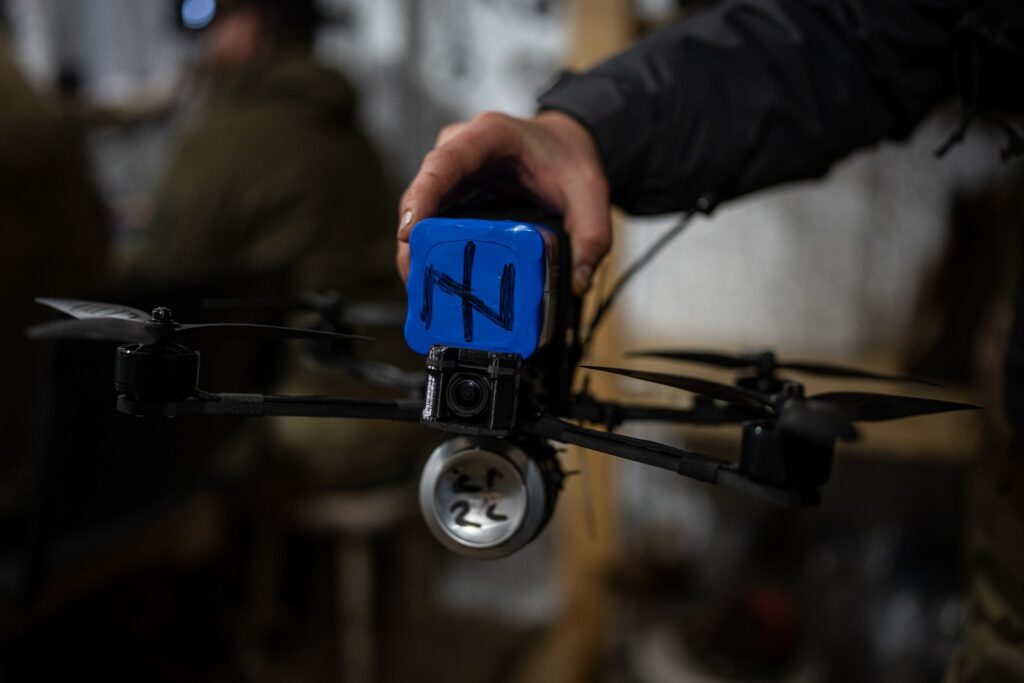
Q: What’s an attack that you are most proud of?
A: I’m mostly proud not of operations, but of people conducting those operations. So I do remember one of the most notable cases. Approximately one year ago, one of our men in one of the sectors destroyed a TOS-2 [thermobaric rocket launcher] system with the unmanned system. That was really notable.
Q: Anything more recent?
A: At the moment our operations have become more of a routine for us, and we just operate based on the principle that we must do this. We must get the job done. And it is quite difficult for me to single out something that is really notable for me. So even if now we have a chance to strike another TOS system, that would be just a part of our routine work. We have engaged tanks, for example. We dealt with all types of vehicles, but once again, at this particular moment, they become less and less visible. More and more concealment measures are employed, and they are usually located at larger distances, and this is why, mostly, we use more and more resources. But unfortunately, the level of efficiency decreases because the enemy also doesn’t wait for us and doesn’t stop their development.
…
We didn’t really participate in any massive drone attacks, because we have quite a modest depth of operation, approximately up to 25 kilometers (about 15.5 miles) in depth. And within this area, it doesn’t really make much sense to conduct massive drone strikes. So we usually establish communication with other drone teams, and we stick to the principle that two or three drones flying to strike a target are better than only one drone for this purpose. But if we are talking about a massive deployment of drones, like 10 to 20 unmanned systems, we didn’t participate in such massive attacks, and we find this particular kind of drone usage quite inappropriate at our level.
Q: Talk about the challenges of fighting in and around Toretsk.
A: At the moment, the level of the enemy’s activity in this sector has risen, and the enemy advances. The enemy pushes our logistical capacities backwards. And over the recent one and a half months, approximately, the enemy uses the unmanned systems. Well, I cannot say whether it is at our level or better than us. That is a difficult thing to determine, but they’re using our tactics approximately the same as us, and they are also striking our logistical capacities, and this creates a significant problem for us.
Q: Are you seeing the Russians increasing the number of drones that they have and are using? And are they outpacing you yet in terms of the number of drones you’re using?
A: It is difficult to say whether they are outpacing us in terms of numbers. I can only tell you about the tactics … They deployed their drones along the front edge of the battle area, and the number was quite significant, so we felt that number quite well. But at this moment, I’m not so sure about the numbers that they deploy, but they are starting to deploy their drones more intelligently. They are selecting their high-value targets, their priority targets, and this is why it is quite difficult for me to talk about exact numbers.
Q: How many troops have you lost in this difficult fight?
A: That’s war. It is impossible to fight a war without losses, and of course, we also suffered losses. But I will not disclose the exact number of troops that we have lost. For me, personally, from my perspective, the loss of every soldier is a critical loss, just from a human side of this issue.
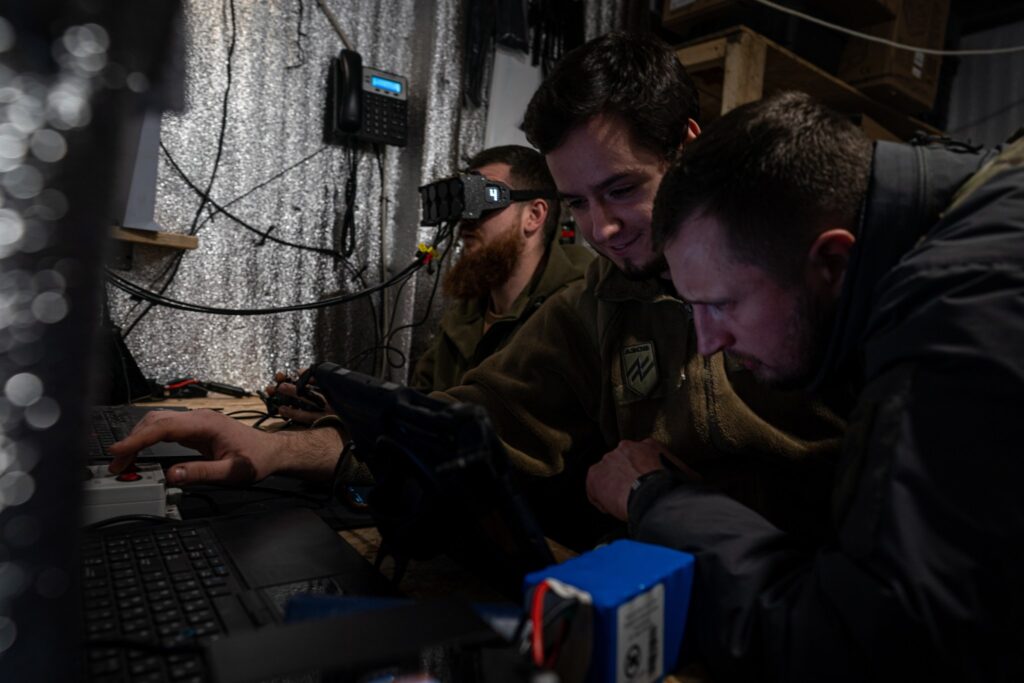
Q: Describe what it is like for the drone operators who carry out your missions.
A: The process is quite complex. First, we receive the drones. We send them to our workshop to be worked on by our specialists. This has now become a complete must for us. Any freshly manufactured drone still has to be refined by our specialists, because a newly manufactured drone is frequently inefficient. After our specialists work with our drones, we transport them directly to the positions where our pilots test them once more, because there can be some malfunctions due to the transportation, conditions, etcetera, etcetera. We need to make sure that the drones are completely operational.
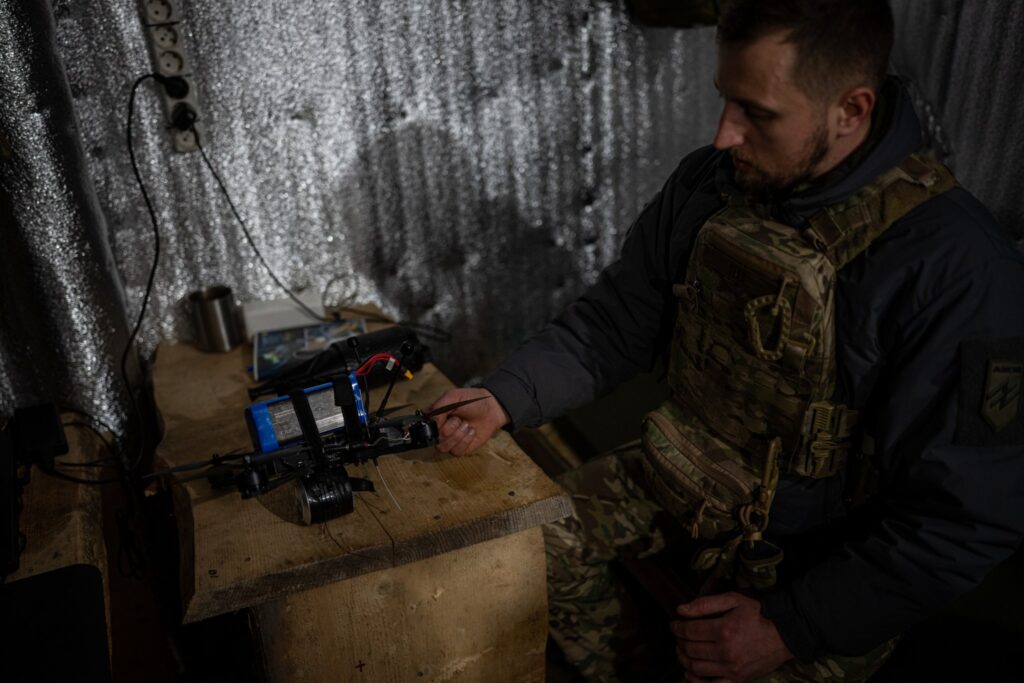
In terms of the work of the pilots themselves, they are always monitoring their voice chat – any secure voice chat that is agreed to – and when the superior commander gives an order to lift off, they already have this drone ready. Depending on the conditions, they might have a lot of space for the drone or less space for the drone, but they always have the UAVs handy. And then a pilot switches the drone on, then gives feedback to the command that everything is fine. Then the pilot returns back to the shelter, because this creates additional protection in case, for example, there is a malfunction, or there is an explosion of the ammunition, etcetera. Only after everyone in the team takes shelter does the actual liftoff happen, and the mission starts.
Basically, the pilot flies the drone, and the pilot is assisted by the navigator, and they fulfill their orders of their superiors. The pilot is also the one who is responsible for the mechanical work, and the pilot is told what to strike and where to fly, etc. With time, of course, as pilots become more and more experienced, they have a more detailed understanding of all of the aspects. But when we have new pilots, when they are just fresh from training, usually the most important role, and this is just a philosophical thought from my side, the most important work is conducted by the navigator, because they need to have impeccable knowledge of the topography, of the terrain. They need to know all the terrain benchmarks to navigate through it. And this becomes especially important while flying long ranges.
Fuente: https://www.twz.com

